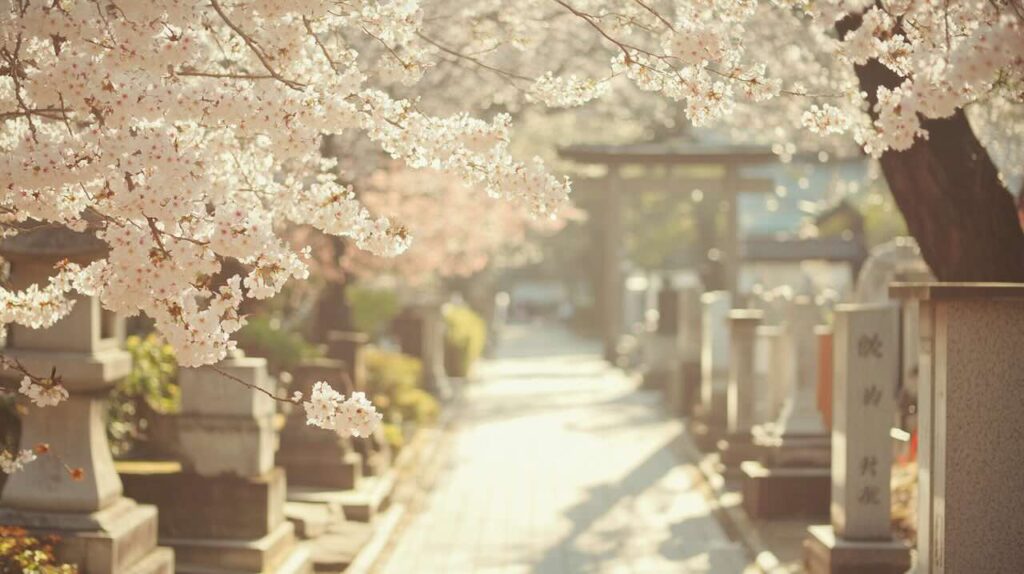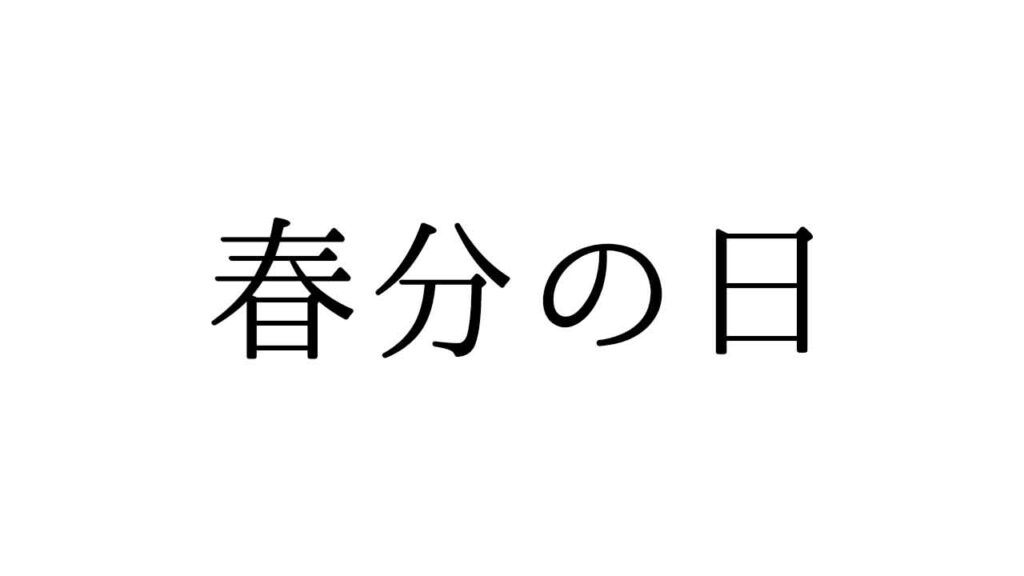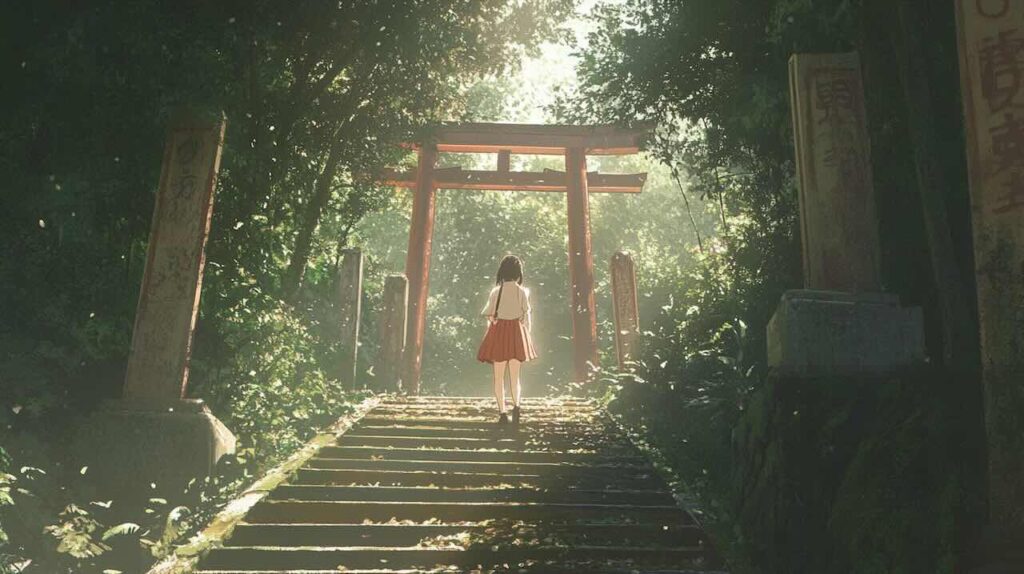If you visit Japan in late March, you may notice something quietly beautiful: families gathered at cemeteries, carefully cleaning gravestones, placing flowers, and offering prayers. This is not simply a seasonal activity, but part of a deeply rooted tradition tied to both Buddhism and Japan’s reverence for ancestors.
At the heart of this custom is a practice called Higan (彼岸), observed during the spring and autumn equinoxes. Let’s explore the cultural, spiritual, and natural significance of this meaningful Japanese tradition.
- The Spring Equinox in Japan: More Than Just a Seasonal Change
- The Buddhist Concept of Higan: “The Other Shore”
- What Happens During Higan? The Ritual of Grave Visiting
- Why the Equinox? The Cultural Connection to Nature
- Higan in Modern Japan: Tradition Continues
- What Makes Higan Uniquely Japanese?
- Summary: Higan as a Window into Japan’s Spiritual Rhythm
- Final Reflection
The Spring Equinox in Japan: More Than Just a Seasonal Change
In Japan, the spring equinox is known as Shunbun no Hi (春分の日). While astronomically it marks the day when day and night are perfectly balanced, in Japanese culture it serves as much more than a seasonal marker — it’s a time for reflection, gratitude, and honoring ancestors.
- Date: Around March 20th or 21st each year
- Status: National holiday in Japan
But why is the equinox so closely linked to ancestor worship?
The Buddhist Concept of Higan: “The Other Shore”
Higan literally means “the other shore” — a metaphor in Buddhist teaching referring to the crossing from the world of suffering (this life, or Shigan, “this shore”) to the world of enlightenment (nirvana).
- During Higan, it’s believed that the boundary between the living and the dead becomes thinner, making it an especially appropriate time to connect with deceased loved ones.
- The equinox’s perfect balance between light and dark symbolizes harmony between life and death, past and present.
While Higan has Buddhist roots, over centuries it has become a broadly observed tradition even among Japanese who do not actively practice Buddhism.
What Happens During Higan? The Ritual of Grave Visiting
The week surrounding the spring equinox is known as Higan Week (彼岸週間), during which families traditionally visit their family graves.
Typical practices include:
1. Cleaning the Grave (Osoji, お掃除)
- Weeding around the grave
- Washing the gravestone with water
- Removing debris or dust
2. Making Offerings (Osonae, お供え)
- Fresh seasonal flowers (often chrysanthemums or lilies)
- Incense sticks (osenko)
- Food offerings such as:
- Rice
- Sweets like ohagi (sweet rice cakes)
- Favorite foods of the deceased
3. Prayers and Reflection
- Hands pressed together in gasshō (合掌)
- Silent personal prayers or gratitude
- Some families may chant short Buddhist sutras
These acts are not merely religious obligations — they represent a gesture of respect, gratitude, and continued connection to ancestors.
During my own first Higan experience in Japan, I was struck by the quiet dignity of families — young children to elderly grandparents — participating together in this act of remembrance. It felt both solemn and deeply comforting.
Why the Equinox? The Cultural Connection to Nature
Japan’s Higan tradition reflects a broader Japanese sensitivity to seasonal transitions:
- The equinox represents perfect balance, mirroring the Buddhist ideal of mental and spiritual balance.
- Nature’s seasonal changes — budding flowers, longer days, milder temperatures — serve as metaphors for renewal, continuity, and the impermanence of life.
- Just as Western cultures celebrate spring holidays like Easter (rebirth), Japan uses the equinox to focus on ancestral continuity.
This fusion of Buddhist philosophy and seasonal awareness is a hallmark of Japanese cultural practices surrounding life and death.
Higan in Modern Japan: Tradition Continues
Even as Japan becomes increasingly modern and secular, Higan remains widely practiced:
- Many people visit family graves even if they no longer strictly follow Buddhist teachings.
- For those living far from ancestral graves, families may instead visit local temples or light incense at home.
- Buddhist temples often hold memorial services (Higan-e, 彼岸会) during this period for communal remembrance.
In a fast-paced, high-tech society, Higan serves as a rare moment to pause, reflect, and reaffirm one’s place in the family lineage.
What Makes Higan Uniquely Japanese?
While ancestor veneration exists in many cultures, Higan reflects uniquely Japanese cultural values:
- Intergenerational continuity: honoring ancestors is a way of recognizing that one’s life is built upon the sacrifices of past generations.
- Harmony with nature: seasonal change is not just noticed, but ritualized and celebrated.
- Quiet spirituality: even those not affiliated with organized religion often participate.
This understated blending of nature, family, and remembrance is part of what makes Japanese culture so distinctive.
Summary: Higan as a Window into Japan’s Spiritual Rhythm
| Aspect | Meaning |
|---|---|
| Higan Translation | “The Other Shore” (Buddhist term for enlightenment) |
| Timing | Spring Equinox (Shunbun no Hi), and also observed during the Autumn Equinox |
| Main Practices | Visiting graves, cleaning tombstones, making offerings, prayer |
| Deeper Symbolism | Balance between life and death, gratitude for ancestors, natural cycles |
Final Reflection
If you ever find yourself in Japan during the spring equinox, pause for a moment. Whether you visit a cemetery, walk past a temple, or simply enjoy the changing seasons, you are witnessing one of Japan’s most quietly profound traditions.
Higan is not simply about mourning the dead — it’s about cherishing life’s impermanence, honoring the bonds between generations, and finding harmony between oneself, nature, and time.


